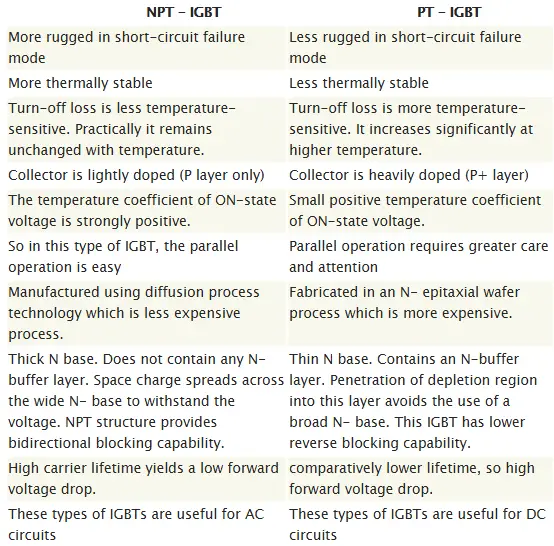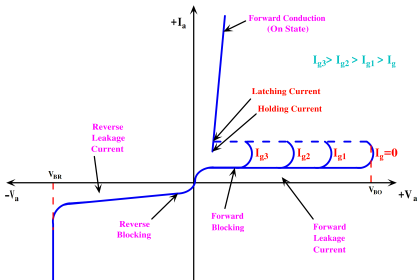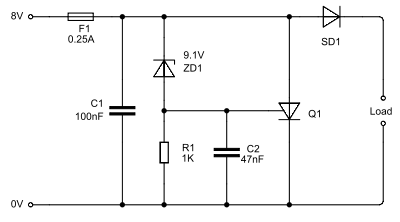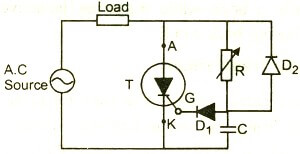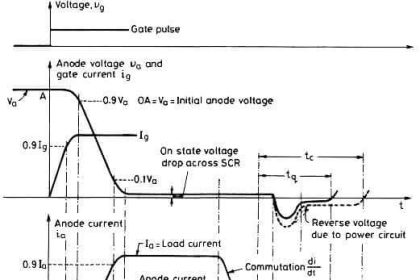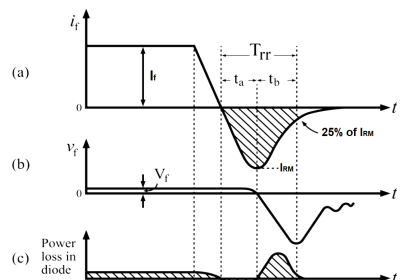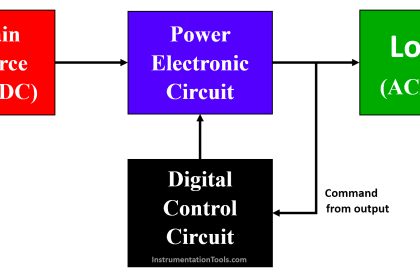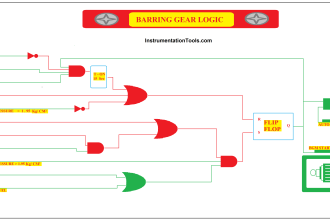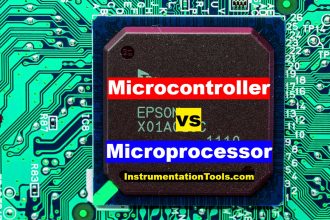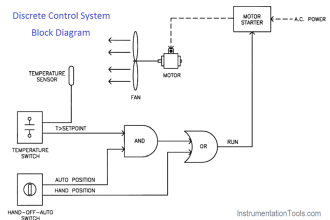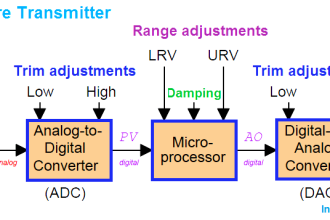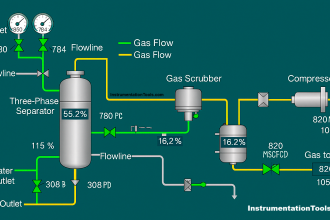Insulated Gate Bipolar Junction Transistor (IGBTs) are normally classified into two types.
They are namely
(i) Non Punch Through IGBT [NPT-IGBT]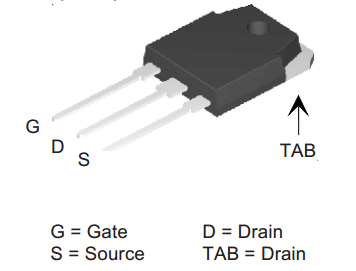
(ii) Punch Through [PT-IGBT].
- These IGBTs are also referred to as symmetrical and asymmetrical IGBTs.
- These varieties of IGBT differ widely with regard to their fabrication technology, structural details etc.
- The table given below shows the salient features of the two types of IGBT.
- Before proceeding further it is strongly recommended to read about Basics of IGBT.
The important facts about IGBT are summarized below ( If you are already familiar with IGBT basics, just skip this paragraph and proceed to next section)
- IGBT has the advantage of high current capability of BJT and has the advantage of easy control like MOSFET. Actually this power semiconductor device emerged to overcome the drawback of transistor and mosfet.
- It is a three terminal device namely Drain, Source and gate or Emitter, Collecter and base.
What is meant by NPT-IGBT and PT-IGBT?
IGBTs having n+ buffer layer is called Punch Through-IGBT (PT-IGBT) and IGBTs made without this layer is known as Non Punch Through-IGBT (NPT-IGBT).
It is good to know about the structure of this device, for proper understanding of n+ buffer layer.
Why are they called as Symmetrical and Asymmetrical IGBTs?
A symmetrical IGBT (NPT-IGBT) is one having equal forward and reverse breakdown voltages. Such devices are used in AC applications.
In the asymmetrical IGBTs (PT-IGBT) structure, the reverse breakdown voltage is less than the forward breakdown voltage. These types of IGBTs are useful for DC circuits where the device is not required to support voltage in the reverse direction.
